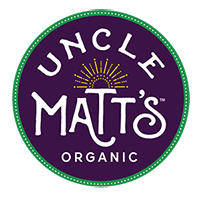Nineteen Pesticides Linked to Increase Cancer Risk
The Agricultural Health Study (AHS) is the largest-ever assessment of the health of workers involvedinU.S. agriculture, and has been underway for almost two decades. A review published in Environmental Health Perspectives summarizes the results of 27 studies using AHS data on linkages between pesticide use and exposure and elevated cancer risk.
A total of 36 cases were identified in which exposure to a pesticide increased the risk of a specific form of cancer. The basic measure of risk in cancer epidemiology studies is the “odds ratio,” where values over 1.0 represent elevated risk, and values less than 1.0, reduced risk.
In general, any odds ratio over 1.2 is regarded as indicative of potential to cause cancer, and values over 2.0 generally raise serious concern among regulators, since a 2.0 odds ratio means the individuals in the most exposed group were twice as likely to suffer from a given cancer as those in the least exposed group.
There were many highly significant odds ratios across the population groups studied (some of the 27 studies reported results in multiple cohorts of people for several pesticides). There were 20 odds ratios that fell in the range 2-3, 12 in the range 3-4, 6 between 4 and 5, and remarkably, three were over 5.
Nineteen pesticides were involved in these 36 cases. While seven of these 19 pesticides are no longer registered or used in the U.S., several widely used pesticides are among the remaining 12 including chlorpyrifos, diazinon, EPTC, dicamba, metolachlor, pendimethalin, aldicarb, imazethapyr, trifluralin, carbaryl, and permethrin.
Lymphoma, non-Hodgkin lymphoma, and brain cancer were among the cancers elevated in children of pesticide applicators in an Iowa study. Exposed children were 2.46-times more likely to suffer from non-Hodgkin lymphoma than children in the unexposed control group.
Residues of chlorpyrifos remain common in the food supply. This organophosphate insecticide was linked to increased cancer risk in the lung, rectum, leukaemia (blood), all lymphoma, and the brain.
This study also points to a new reason for concern over the rapidly growing use of the herbicide dicamba. This persistent herbicide is recommended for use in fields infested with glyphosate-resistant weeds.
Dicamba increased the risk of cancer in the lung and colon, and has also been implicated as a risk factor for a range of birth defects and reproductive problems. The aggressive effort by the biotechnology industry to bring dicamba-resistant crops to market is reviewed in Chapter 7 of the Organic Center report”Impacts of Genetically Engineered Crops on Pesticide Use in the United States: The First Thirteen Years“.
Source: Weichenthal, S. Et al., “A Review of Pesticide Exposure and Cancer Incidence in the Agricultural Health Study Cohort,”Environmental Health Perspectives, Vol. 118, No. 8, August 2010, pages 1117-1125.

